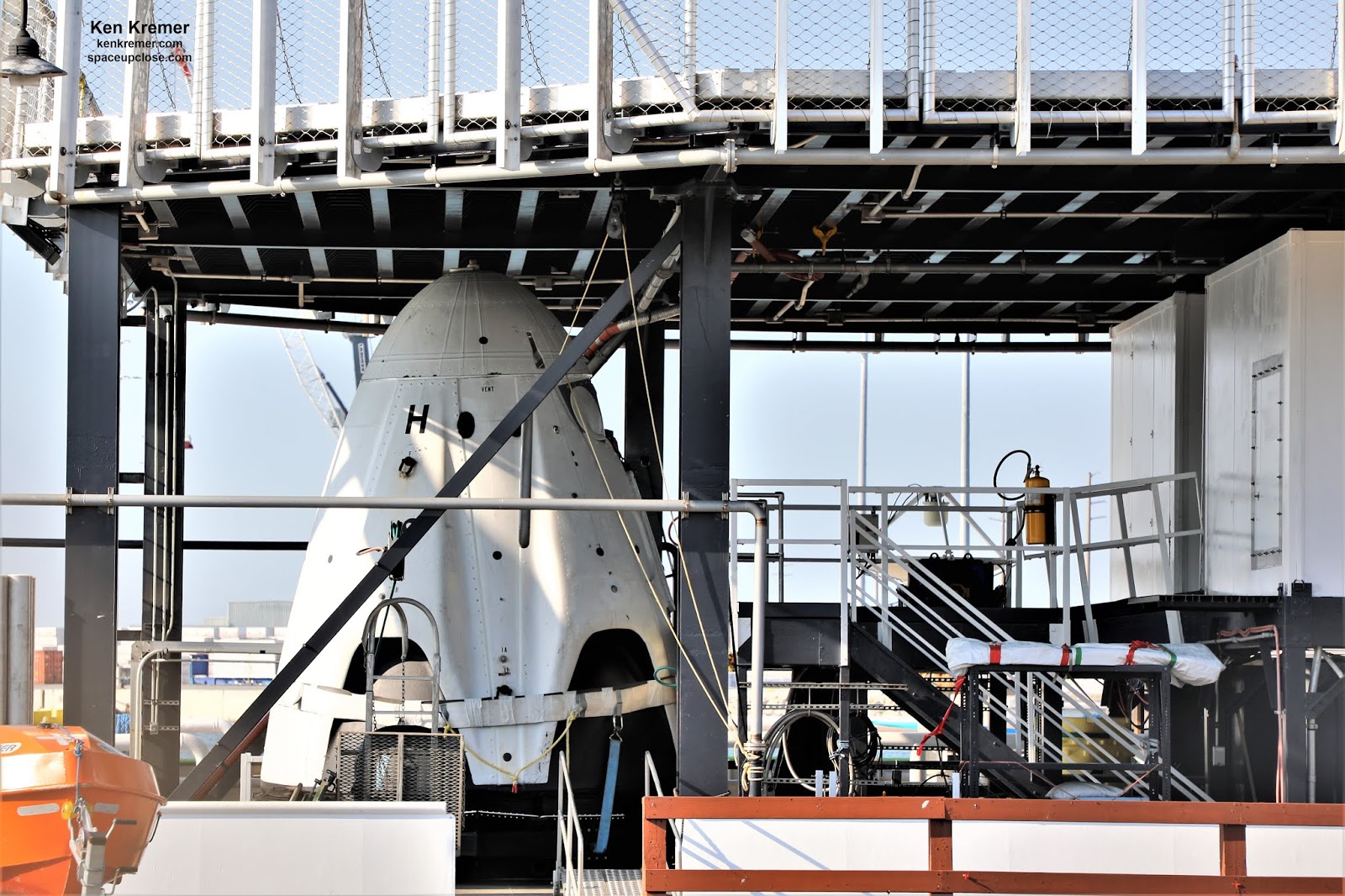
PORT CANAVERAL, FL – NASA and SpaceX teams recently rehearsed critical activities required to safely and rapidly, recover and extract astronauts from Crew Dragon spacecraft following return to Earth from missions to the International Space Station as part of NASA’s Commercial Crew Program.
The practice exercises involving NASA and SpaceX personnel simulating work to remove astronauts from a Crew Dragon following splashdown in the Atlantic Ocean and recovery with the SpaceX GO Searcher recovery ship took place last month on Aug. 13 in the Trident basin in Port Canaveral, Florida using a mock-up version of the Crew Dragon.
During the extraction rehearsal the NASA and SpaceX teams worked through the steps necessary to get the astronaut crew out of the Dragon post splashdown and back to dry land on the US East Coast.
The recovery efforts were conducted with the two NASA astronauts who will fly on the first crewed test flight of the SpaceX Crew Dragon on the Demo-2 mission – namely Doug Hurley and Bob Behnken.
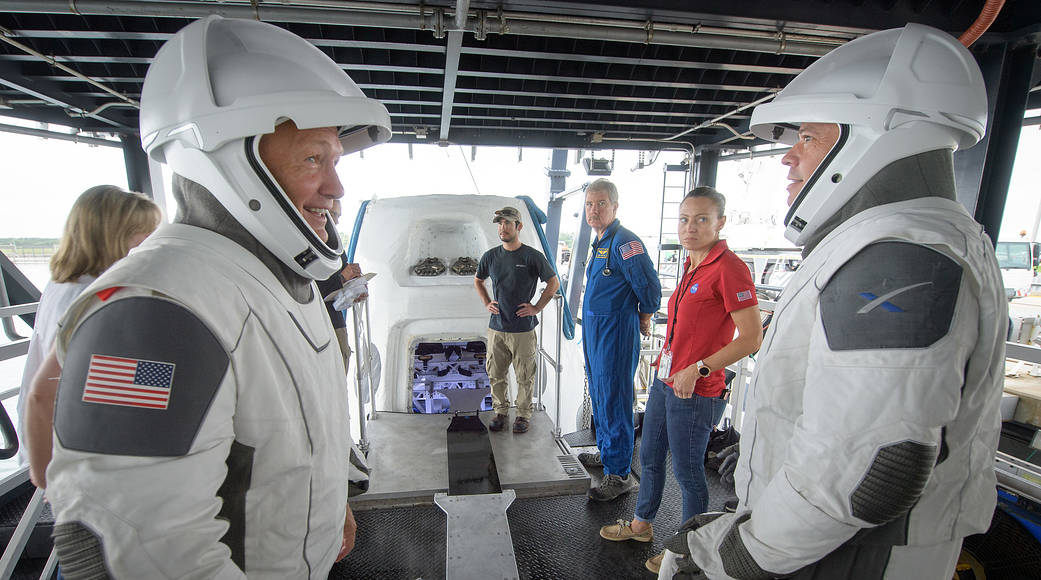
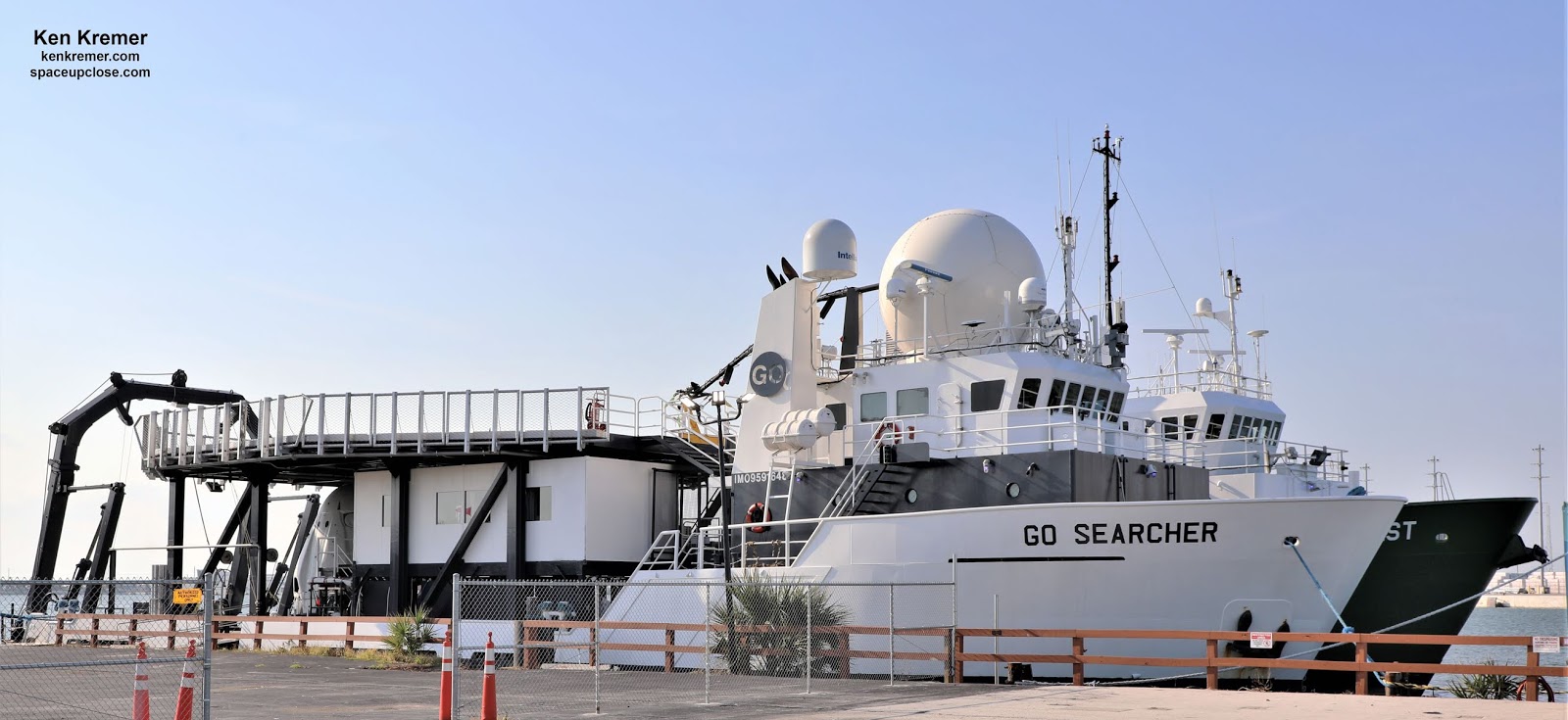
“Teams from NASA and SpaceX practiced removing astronauts from a Crew Dragon spacecraft on Tuesday, Aug. 13, at Port Canaveral in Florida,” NASA said in a statement.
“The joint simulation involved a mock-up of the spacecraft and Go Searcher, one of the SpaceX ships that will recover the spacecraft and astronauts after splashing down in the Atlantic Ocean. NASA astronauts Doug Hurley and Bob Behnken, who will fly to and from the space station aboard Crew Dragon for the SpaceX Demo-2 mission, participated in the exercise.”
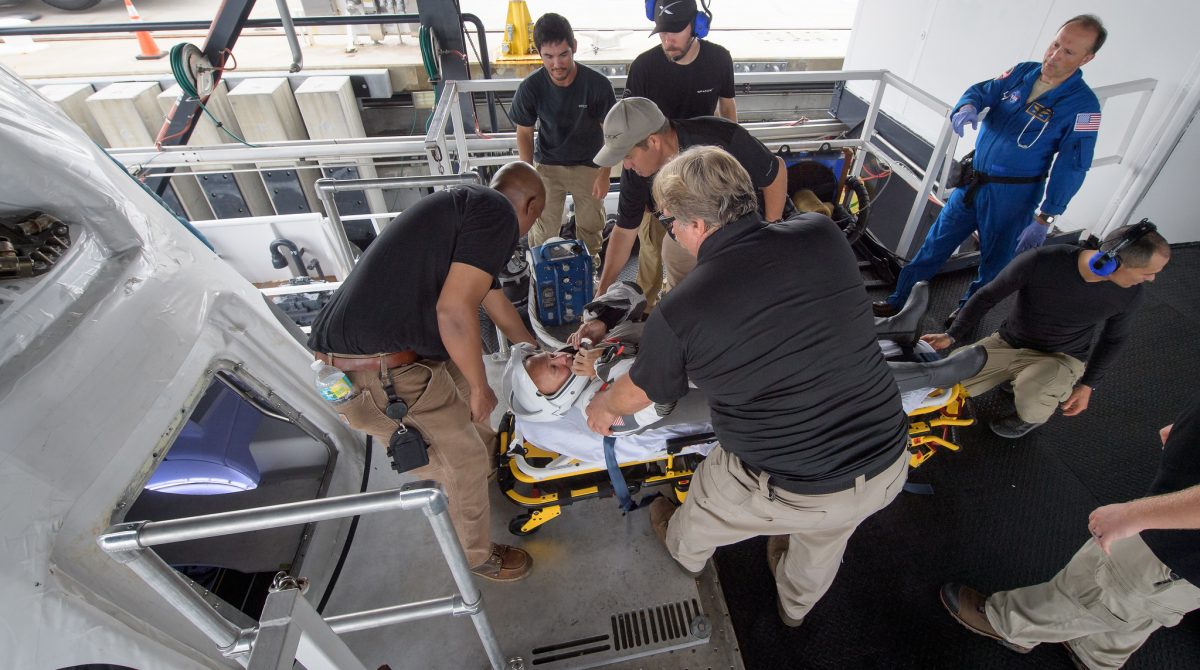
“Integrated tests like today’s are a crucial element in preparing for human spaceflight missions,” Hurley said. “This opportunity allowed us to work with the recovery team and ensure the plans are solid for the Demo-2 mission.”
“We are both looking forward to the Demo-2 flight and having the opportunity to return to the International Space Station,” Behnken said. “Each of these exercises puts us one step closer to fulfilling NASA’s mission of returning astronauts to the International Space Station from U.S. soil.”
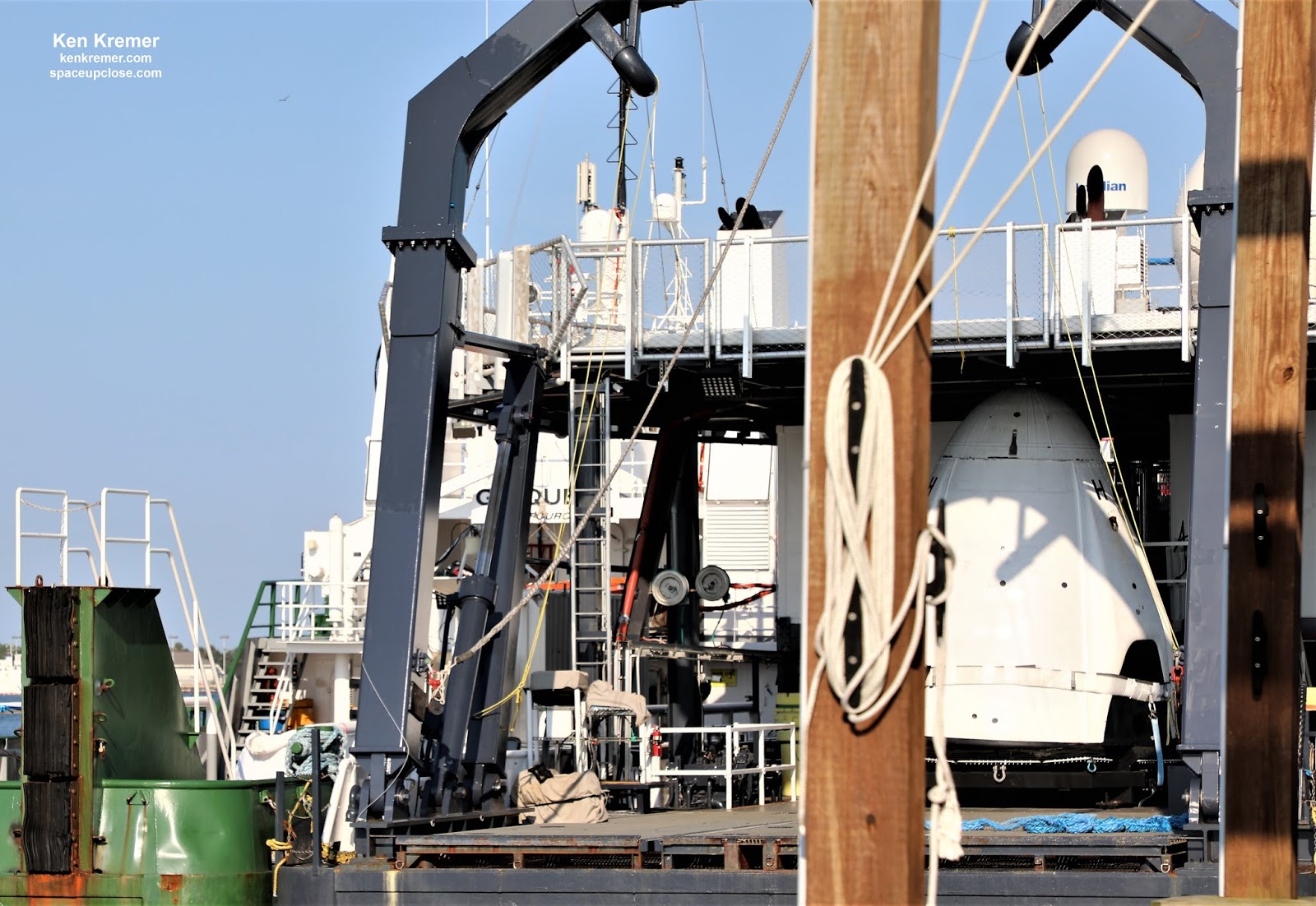
Notably the Aug. 13 exercise marked the first time a fully integrated and coordinated NASA and SpaceX team “worked together on the ship to go through an end-to-end practice run of how the teams will recover and extract the astronauts when they return from the space station in Crew Dragon.”
As part of the rehearsal, Hurley and Behnken were extracted from the mock-up Crew Dragon, underwent mock medical evaluation and then transported to an airport – Cape Canaveral Air Force Station Skid Strip – as they would be during a real mission.
The goal is to ensure all participants “knew their roles and responsibilities.”
“We’re making sure that the team integrates together — that’s a key to any successful mission,” said Ted Mosteller, the NASA recovery director in charge of the agency’s team for the Commercial Crew Program, in a statement. “We worked on successfully doing what we need to do to take care of the crew once they return to Earth.”
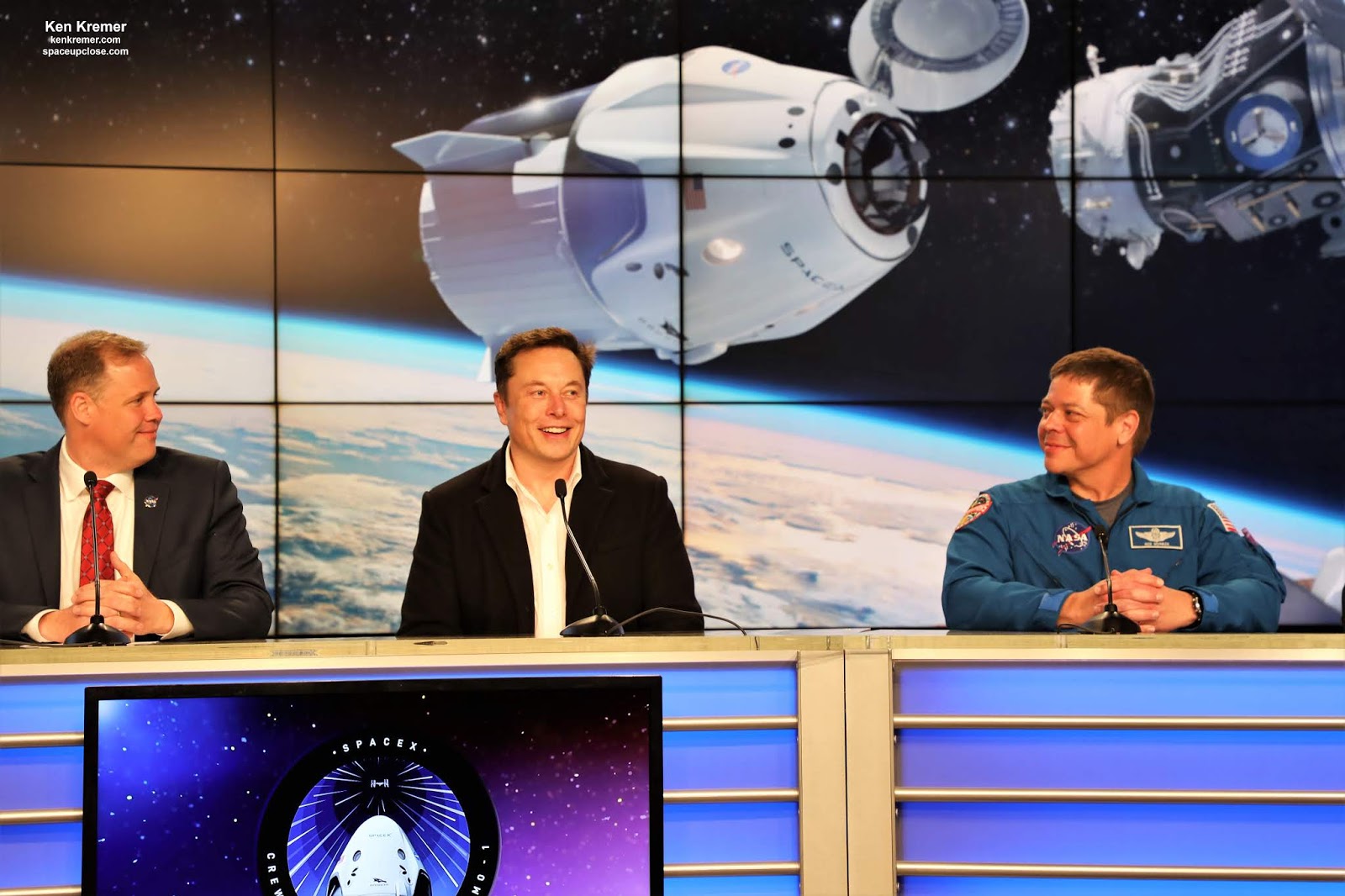
GO Searcher was utilized to successfully recover the unpiloted Demo-1 Crew Dragon following its launch and Atlantic Ocean splashdown in March 2019 and return to Port Canaveral on March 9.
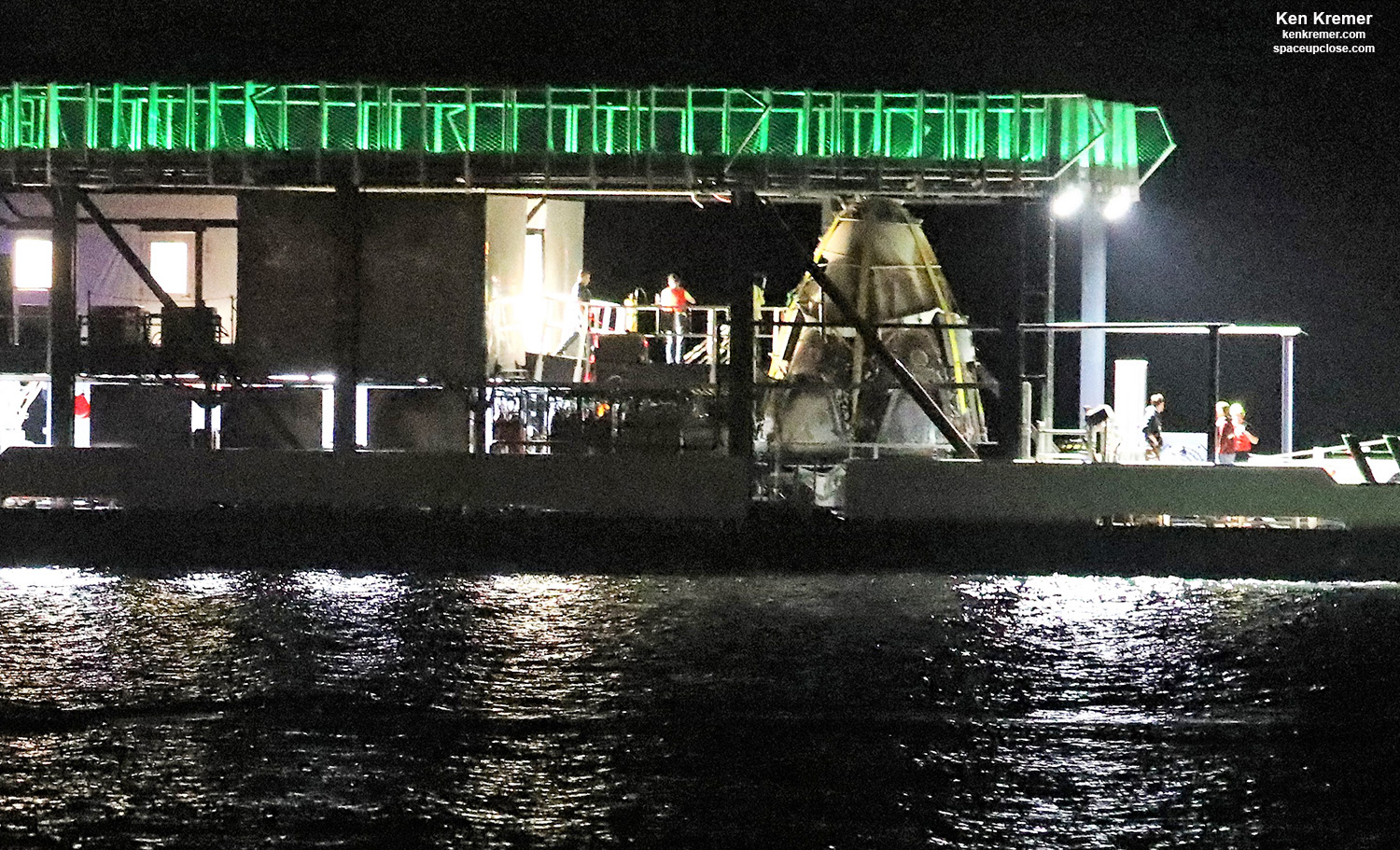
‘GO Searcher’ has been upgraded with a crane to enable recovery of the commercially built SpaceX crew capsule by hoisting the spaceship from the waters off Florida’s east coast launch base at NASA’s Kennedy Space Center under a normal scenario.
A helipad and medical treatment facility were also installed on board as part of extensive modifications to the ship.
“When astronauts splash down into the ocean after their journey to the International Space Station on SpaceX’s Crew Dragon spacecraft, recovery teams must be able to transport them to land quickly,” according to NASA officials.
“In the unlikely event of an astronaut medical emergency, SpaceX has outfitted its recovery ship, GO Searcher, with a medical treatment facility and a helipad in the center of the vessel.”
Crew Dragon was built under contract to NASA as part of the agency’s Commercial Crew Program (CCP) initiative to restore America’s capability to launch astronauts to the ISS and end our sole reliance on the Russian Soyuz crew capsule for the first time since NASA’s space shuttle orbiters were retired more than seven years ago in 2011.
The SpaceX Crew Dragon and Boeing Starliner CST-100 human spacecraft are currently development under NASA’s $6.8 Billion Commercial Crew Program (CCP) -with the goal to once again ferry American astronauts to the International Space Station (ISS) from American soil on American rockets
SpaceX was awarded a $2.6 Billion contract while Boeing received $4.2 Billion. Boeing hopes to fly its maiden unmanned Starliner mission later this fall atop a ULA Atlas V rocket followed by a manned mission perhaps by years end.


